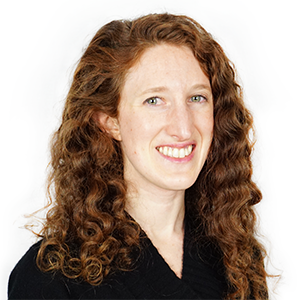You have /5 articles left.
Sign up for a free account or log in.

Adamkaz/E+/Getty Images
Complete College America, an advocacy organization focused on closing equity gaps in graduation rates, recently launched a new initiative to boost college completion for adult learners at predominantly and historically Black community colleges.
The two-year project will work with a cohort of 25 to 30 institutions to assess how they serve adult students of color and to develop well-designed pathways to credentials that increase their earnings. The initiative seeks to address long-standing inequities and obstacles faced by adult learners of color on their paths to graduation, amid a pandemic that highlighted the distinct role of community colleges in meeting local workforce needs. It also comes at a time of renewed urgency to address the social and economic inequities highlighted during the national racial reckoning that began in summer 2020 after the police killing of George Floyd.
Cynthia Anthony, president of Lawson State Community College, a historically Black institution in Alabama, said adult students are highly motivated but can have long, winding roads to earning degrees because of the extra work and family responsibilities they have in their lives. Many have full-time jobs and children.
“They may stop out, and then they have to come back and restart, stop out again and come back and pick up where they left off,” she said. “We know that we have to be focused and we have to be intentional in order for us to increase the graduation rates and the success rates of this population.”
The median age of a community college student is 24 years old, according to data from the National Center for Education Statistics. More than a third of community college students are between the ages of 22 and 39, and about 8 percent are at least 40 years old. Adult learners of color lag behind their white peers in attaining degrees, a 2021 report by the Community College Research Center found.
The report says 42 percent of Black Americans, 58 percent of Latinx Americans and 50 percent of Native Americans age 25 and over never advanced beyond a high school degree, compared to 31 percent of their white counterparts. Meanwhile, 42 percent of white adults earned a bachelor's degree or higher, compared to 27 percent of Black Americans and 19 percent of Latinx and Native Americans.
“In community colleges in particular, the traditional student is maybe what we’d think of 10 years ago as a nontraditional student,” said California Community Colleges chancellor Eloy Ortiz Oakley, who is temporarily on leave working for the Biden administration. “We are the most obvious choice for working adults. They don’t have to apply; they don’t have to worry about what’s on their transcripts. They have an opportunity to select a program to study and jump in. I see our colleges as the most important system for this demographic of learner.”
The initiative is one step toward a goal set by the Lumina Foundation, which is funding the effort with a $1 million grant, to ensure 60 percent of adults hold quality credentials by 2025. Amber Garrison Duncan, the foundation's strategy director for student success at community colleges, said a driving question behind this project was “Where are Black, Latino and Native American students learning in the community college sector?”
Duncan noted an analysis by Complete College America found that 12 public historically Black community colleges and about 20 predominantly Black community colleges in the United States enroll 10 percent of all Black community college students nationally. (Note: This sentence was revised to reflect updated numbers.)
Kayla C. Elliott, director of higher education policy at the Education Trust, also emphasized that this small group of institutions has an outsize impact on success metrics for students of color. She wrote a 2019 report on historically Black community colleges that notes the dearth of academic literature about these institutions. The research that does exist suggests that graduation and transfer rates at these institutions are on par with, if not better than, their community college peers, according to her report.
“Predominantly and historically Black community colleges by design and federal designation overproduce and overenroll and do more than their fair share in educating Black students,” Elliott said. They’re simultaneously underresourced “twofold” as both community colleges and historically and predominantly Black institutions. “This opportunity, any opportunity, to invest more in their capacity to serve their students is worthwhile and will advance equity in completion and attainment for students in those states.”
Colleges chosen to participate in the initiative will collect relevant data over the next month, including adult student enrollment and completion rates and continuation rates, and the number of adult learners who move into associate degree programs after earning other credentials. Complete College America will then work with the colleges to set goals and choose strategies they want to implement in response to institution-level data.
“This is not intended to be a top-down initiative,” Duncan said. “This is intended to be of and with community.”
Colleges will examine barriers to success for adult learners at each institution, whether that’s childcare responsibilities, the structure of course schedules or when advising appointments are offered, said Nia Woods Haydel, vice president for alliance engagement and institutional transformation at Complete College America. She believes the key to adult-friendly programs is “flexibility.”
“Higher education in general is really traditional and sometimes rigid in scheduling, so making sure there’s flexibility in the way we offer classes, when we offer them, how we offer them, I think, is important,” she said.
The initiative will especially focus on creating pathways to degrees with stackable credentials, such as certificates, embedded along the way so adults gain more earning potential even before they graduate -- but not just any credentials -- “credentials of value,” Haydel added. “We mean credentials that will lead to social and economic mobility, upward mobility.”
Duncan pointed out that adult learners at most community colleges are concentrated in noncredit programs, but this model allows them to pursue an associate degree at the same time as noncredit credentials. She believes this could be a particularly fruitful approach during the pandemic.
“Especially in this moment where we’re trying to get into an economic recovery, folks need to upskill or reskill quickly just to get into the labor market or get a pay increase … but they don’t want to stop learning,” she said.
A community college degree can make a major difference for students’ future wages. The average community college student who graduates with an associate degree earns $5,400 more each year of employment than a student who drops out, according to research from the Community College Research Center.
Anthony, the Lawson State president, said she expects the long-term effects of investing in adult learners of color to be “very far-reaching” as more graduates from minority communities use their credentials to secure better-paying jobs, move into the middle class and accumulate wealth. She noted that, in a typical year, between 35 and 40 percent of the over 3,500 students enrolled at Lawson State are age 24 and above.
“We are not only impacting the students that we’re serving now, the communities that we’re serving now, and the workforce that we’re serving now, but we are changing generations to come,” she said. She believes “five years, 10 years, 25 years down the line we will still be realizing the benefits of the investments that have been made in community colleges.”
The pandemic “elevated” the national attention paid to community colleges and workforce development, because the public health crisis “amplified the gaps” between employees with and without degrees, said Chandra Scott, executive director of Alabama Possible, a statewide nonprofit organization focused on college access. She pointed out that workers without degrees were more vulnerable to layoffs and more likely to be in industries that could not pivot online.
Oakley said he sees more employers offering tuition assistance to help adult students pursue credentials and more institutions exploring competency-based models and flexible course schedules in the hopes of an "equitable recovery" from the pandemic. He also noted that some states are seeing declines in the number of traditional-age students, and as a result, colleges are working to recruit and retain more adult workers as an enrollment strategy.
Scott also believes a renewed national focus on racial justice has garnered new interest in how predominantly and historically Black community colleges can serve adult students and create a diverse workforce pipeline. Her state has eight of these institutions.
They weren't “always on the top of the list as the first institutions to think of when business industries would say, ‘What institution can I go to, to partner with, to get highly qualified workers into my company?’” she said. “I think now because there’s such a shift around racial inequities that the intention is there more than before.”
The goal of the Complete College America initiative is not only to work alongside colleges to make changes to support adults but to form a broader network for predominantly and historically Black community colleges to connect and continue to work together. The initiative will also highlight the strategies colleges already use to serve adult learners of color and offer a platform for scholars at these institutions to share their research and best practices.
These institutions remain “largely unheard-of,” Haydel said. “We don’t hear a lot about the work that they do, the impact they have, and so this project provides the opportunity to really focus on a sector that has largely been left behind and not included in the conversation around college completion.”
Haydel noted that four-year HBCUs have organizations created specifically to represent them. The United Negro College Fund supports private HBCUs and the Thurgood Marshall College Fund supports public HBCUs, but community colleges, while sometimes served by these organizations, lack a network specifically for them.
Complete College America will have an online platform where it will publish research about adult learners at these colleges gathered over the course of the initiative and feature relevant work by faculty members at these institutions. The group also plans to host virtual -- and eventually in-person -- convenings for college leaders, which will likely include meetings for “communities of practice,” colleges working on similar strategies and regional groups for colleges in the same state, Haydel said.
Two years from now, “I hope that we have degree programs that meet the needs of adult students so that they are organized in a way, structured in a way, where students can see success at the end,” she said. She also wants to see a “robust and thriving community” of leaders at predominantly and historically Black community colleges, “one that the outside world can see and draw from as a resource to advance college completion efforts nationally.”





